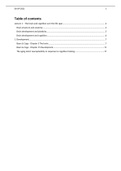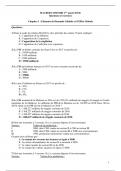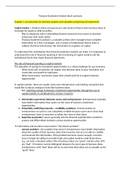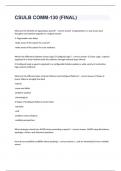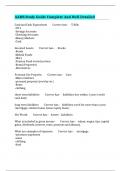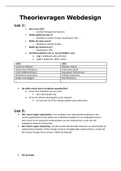Consumer Utility
= a measure of the customer preference of a product or service
The decision: Where will we go for lunch today, and why?
Utility number is not enough to explain why one should go there for lunch
Consumer utility
=
Consumption Utility Price Inconvenience
Performance Fit Location Timing
• Price:
o The total cost of owning a product or receiving a service
o Including expenses such as shipping and financing etc.
• Inconvenience:
o The reduction in utility that results from the effort of obtaining the product or service
o Location: The place where customer can get a product or service
o Timing: the amount of time that passes between ordering and receiving a product or service
• Consumption Utility:
o Is a measurement of how much you like a service, ignoring the effects of price and its
inconvenience
o Consumption ability comes from various attributes such as Performance and fit
o Performance: subcomponent of consumption utility capturing how much a consumer
desires a product or service (we all desire “cleaner”, “newer”, “more efficient” …)
o Fit: subcomponent of consumption utility that captures how well the product or service
matches with the uniqueness of a given consumer. On some attributes consumers disagree
what the best is
,What drives your utility of where to go to dinner?
• Consumption utility:
o Performance: freshness, nutrition level, cleanliness
o Fit: style of food, taste, style of restaurant
• Price: price for the food order
• Inconvenience:
o Location: closeness of the restaurant
o Timing: fast food vs longer waiting time
What drives your utility of choosing a hotel room in San Francisco?
• Consumption utility:
o Performance: air-conditioning, Wi-Fi, size of the room
o Fit: classic vs. modern, quiet vs busy atmosphere
• Price: just the price you pay to the hotel
• Location: close to your travel plans (e.g., sightseeing, attend a conference, ..)
• Timing: no room available during your holidays
Strategic trade-offs and the Efficient Frontier
Strategic Trade-off:
• When selecting inputs and resources, the firm must choose between a set that excels in one
direction of customer utility or another, but no single set of inputs and resources can excel in all
dimensions
• To decide in which dimensions of the customer utility a firm wants to excel
Capabilities:
• The dimensions of the customer’s utility function a firm is able to satisfy
• Capabilities allow a company to do well on some but not all components of customer utility
• We focus on two dimensions, namely responsiveness and cost performance
• If a company is more responsive, it is faster in serving a customer
• If a company improves its cost performance: How much money in resources does the company
needs to invest to serve a single customer
• How do the customers value these aspects in the utility
• Market segments:
o A set of customers who have a similar utility functions
, restaurant A and B dominate restaurant C
Restaurant D dominates all of the other restaurants (paerito optimal)
, Towards (and beyond) the Pareto Frontier
Operations management
• Improving the way, a business does its work in order to be part of the efficient frontier (“The
Science for the Better”)
• Managing processes to efficiency (e.g., reduced cost, better utilized resources) match deand and
supply
Costs for inputs:
• Inputs are the things that a business purchases:
o A fast-food restaurant purchases meat, salad, buns, soda, etc.
o Car manufactures buy steel, seats and tires
o Hospitals purchase medications bandages and food
Costs for resources:
• Resources are the things in a business that help transform input into output that match customers
demand:
o Ina fast-food restaurant, the resources that are the cooking equipment, the real estate of
the restaurant and the employees
o Car manufacturers have plants, warehouses and employees
o Hospitals have doctors, nurses and their building
Three System Inhibitors: Waste, Variability, Inflexibility
Waste
• Everything that is associated with our cost that does not add anything with regards to well you
• The consumption of inputs and resources that do not add value to the customer
• It does not help you make more money
o Restaurant: disposes expired food, bad layout (e.g., employees waste time looking for the
sauce)
o Every time that a employee wastes time to do something that does not make the company
(restaurant) any profit is a waste


